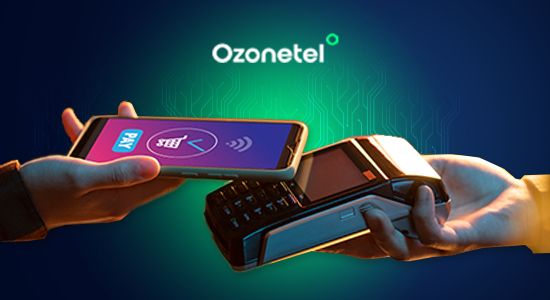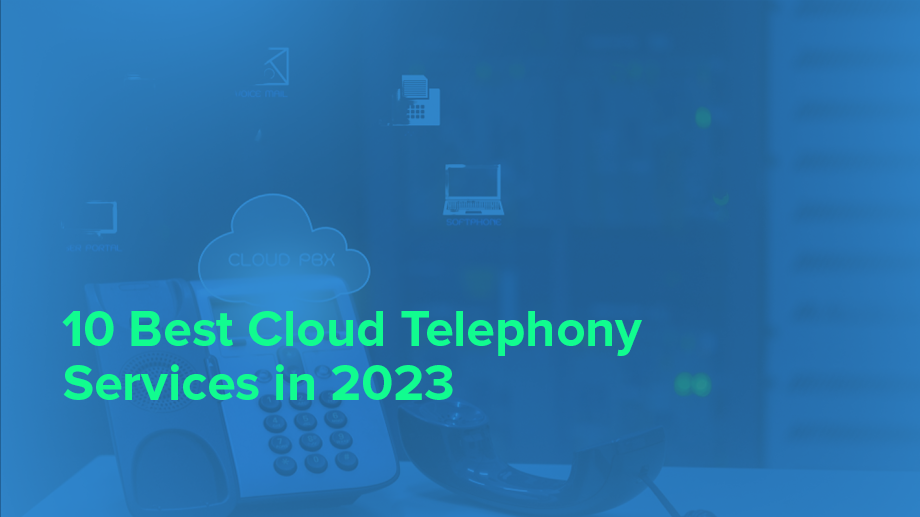- Resources
- Customer Experience Marketing Explained [2025 Guide]
Customer Experience Marketing Explained [2025 Guide]

Most businesses focus on what they sell—but customers remember how they feel when interacting with a brand. A great product isn’t enough if the experience around it is frustrating. Long wait times, confusing interfaces, or impersonal service can push customers away, no matter how good your offering is.
That’s where customer experience marketing (CX marketing) comes in. It’s about creating smooth, engaging interactions that make customers want to return. From personalized recommendations to effortless support, the brands that get CX right don’t just attract customers—they keep them.
This guide breaks down what CX marketing is, why it matters, and how top brands use it to build loyalty.
In this article, we will explore:
- 1.What Is Customer Experience Marketing?
- 2. Key Components of Customer Experience Marketing
- 3.Why Customer Experience Marketing Matters
- 4. 6 Benefits Of Consumer Experience Marketing For Businesses
- 5.How To Build and Deploy A Customized CX Marketing Strategy
- 6.Top Metrics to Measure Customer Experience Marketing Efforts
- 7.Key Trends Shaping Customer Experience in Marketing
- 8.Examples Of Customer Experience Marketing
What Is Customer Obsession?
Customer obsession is about placing your customers at the core of every decision you make. It goes beyond simply satisfying their needs—it’s about actively working to improve their experience at every touchpoint, anticipating what they want, and addressing their concerns before they even raise them.
What Is Customer Experience Marketing?
Customer experience marketing (CEM or CXM) is a strategy that focuses on delivering positive, memorable experiences for customers at every stage of their journey with your brand. The goal is to build loyalty, retain customers, and turn them into advocates for your brand.
Key Components of Customer Experience Marketing
A few key components of customer experience marketing include:
Customer Journey Mapping
The first step in CXM is understanding your customers’ entire journey. This involves mapping out each touchpoint where a customer interacts with your brand—whether it’s through your website, social media, or customer service. By identifying pain points along the way, you can turn those moments into opportunities to improve the overall experience.
Personalization
Today, customers expect a personalized experience. Whether it’s tailored emails, recommendations, or customer service interactions, personalizing your approach helps build stronger connections. When you deliver content and services based on individual preferences, customers feel understood and valued.
Omnichannel Experiences
Customers interact with businesses across a wide range of channels—email, social media, chat, and more. For a seamless experience, all your channels should provide consistent messaging and support. This consistency helps to build trust, making customers more likely to stick around.
Proactive Engagement
Customers now expect businesses to anticipate their needs rather than just react to issues when they arise. Proactively offering solutions and addressing concerns before they become problems is crucial in today’s competitive environment. This anticipatory approach to customer service can significantly improve satisfaction.
Feedback Loops
Collecting customer feedback is important, but acting on it is even more vital. By continually gathering and analyzing customer input, you can understand what works well and what doesn’t. Then, you can make improvements based on that feedback, showing customers that their opinions matter.
Why Customer Experience Marketing Matters
Unlike focusing solely on attracting new customers, which can be costly, CXM helps to retain and engage existing ones. In fact, research shows that 59% of people will leave a brand after several bad experiences, and 17% will walk away after just one negative interaction. So, it’s not just about getting customers in the door but ensuring they remain satisfied throughout their entire experience with your brand.
Additionally, creating a great customer experience is an investment in long-term customer loyalty. People remember how they feel when interacting with your brand, and those positive emotions lead to increased customer retention and organic word-of-mouth promotion. The more customers feel valued and understood, the more likely they are to keep coming back and recommend your brand to others.
6 Benefits Of Consumer Experience Marketing For Businesses
By prioritizing personalized interactions and seamless engagement, you create a positive brand experience that drives business growth. Let’s discuss the benefits of implementing CX marketing in a little more detail:
Stronger Brand Reputation
Positive customer experiences turn satisfied customers into brand advocates. When people have a seamless and enjoyable interaction with your brand, they are more likely to leave positive reviews and recommend you to others. Word-of-mouth referrals and influencer endorsements play a major role in shaping your reputation and attracting new customers.
Higher Customer Loyalty

When customers feel valued, they stay loyal. Personalization, appreciation, and consistent engagement build trust and encourage repeat business. Brands like Netflix thrive on this approach by offering tailored recommendations and a seamless viewing experience, keeping users engaged for the long term.
Improved Customer Retention
CX marketing strengthens emotional connections with your audience. Since emotions often drive purchasing decisions, maintaining meaningful interactions through personalized recommendations, empathetic support, and loyalty programs helps keep customers engaged and reduces churn.
Increased Customer Lifetime Value (CLV)
Customers who have positive experiences are more likely to return and spend more over time. Since acquiring new customers costs significantly more than retaining existing ones, increasing CLV through CX marketing improves long-term profitability. A satisfied customer is also more likely to explore additional products and services, driving overall revenue growth.
Actionable Insights on Consumer Preferences
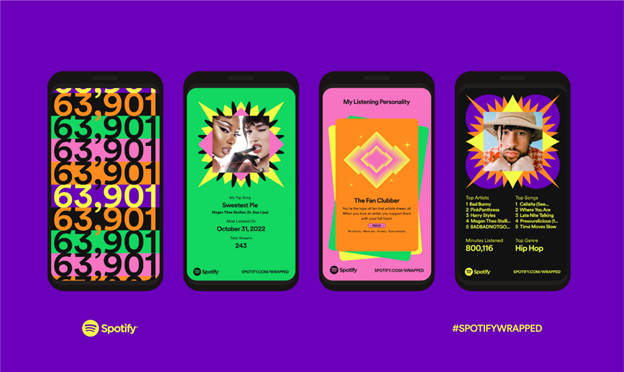
Gathering customer feedback through CX marketing provides valuable insights into buying habits and preferences. Analyzing this data allows you to refine your offerings, improve services, and deliver better experiences. Spotify’s “Wrapped” campaign, for example, uses listening data to personalize user engagement while helping the company understand customer behavior.
Better Employee Engagement
A strong CX strategy benefits not just customers but also employees. When employees see the impact of positive customer interactions, it boosts morale and motivation. Engaged employees are more likely to deliver exceptional service, creating a cycle of improved customer satisfaction and brand loyalty.
How To Build and Deploy A Customized CX Marketing Strategy
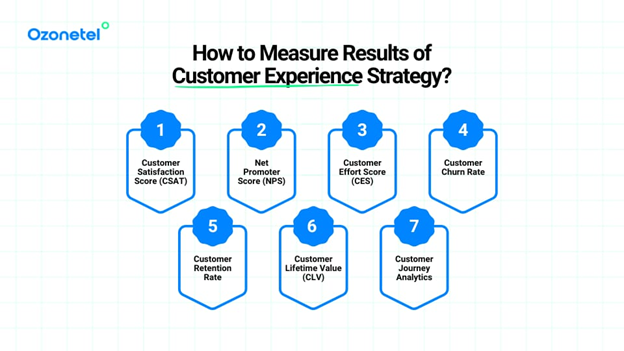
By now, we are well aware of the multiple benefits that customer experience (CX) marketing strategy offers but how do you successfully implement it? A well-structured plan lets you address customer pain points effectively while aligning marketing efforts with business goals. Here’s a step-by-step guide to building and implementing a CX marketing strategy that works.
1. Set Clear Goals
Before making any changes, define what you want to achieve. Do you want to improve customer retention, increase referrals, or reduce churn? Setting specific, measurable, and realistic goals will give your CX strategy direction. For example, if you aim to increase your Net Promoter Score (NPS) by 15% in six months, you can track progress and adjust your approach accordingly.
2. Identify Customer Needs
Understanding your customers is the foundation of an effective CX strategy. Use surveys, analytics, and customer segmentation to gather insights into what they expect from your brand. Look at common frustrations and pain points—whether it’s slow response times, unclear communication, or lack of personalization—so you can address them directly.
3. Map the Customer Journey
A customer journey map helps you visualize how people interact with your business at different touchpoints, from discovery to post-purchase support. Identify which channels they use most, where they face difficulties, and what influences their decisions. For instance, if most urgent queries come through phone support, investing in faster response times for that channel could improve customer satisfaction.
4. Collect and Act on Customer Feedback
Customer feedback gives you direct insight into what’s working and what isn’t. Use tools like surveys, live chat transcripts, call recordings, and social media listening to gather feedback. But collecting data isn’t enough—you need to act on it. If customers frequently complain about delayed responses, prioritize fixing response times instead of just acknowledging the issue.
5. Align CX Marketing with Workflows
CX marketing isn’t just about campaigns—it needs to be part of everyday business operations. Standardized workflows help maintain consistent interactions across different teams. Whether a customer reaches out through email, chat, or phone, they should receive the same level of service. Training programs can also help employees understand the importance of CX marketing and how to deliver personalized experiences.
6. Use Technology to Improve CX
Technology simplifies CX efforts by automating repetitive tasks and personalizing interactions. CRM systems, AI chatbots, and analytics tools can help you track customer behavior, predict their needs, and offer relevant recommendations. For example, an AI chatbot can handle routine inquiries, freeing up human agents to handle more complex issues.
7. Test, Measure, and Refine Your Strategy
CX marketing isn’t a one-time effort. Regularly track key performance indicators (KPIs) like customer satisfaction, churn rate, and customer lifetime value to measure success. If certain strategies aren’t delivering results, refine them based on customer feedback and performance data. Combining quantitative metrics with qualitative insights from customer stories can give you a clearer picture of how well your CX marketing is working.
Top Metrics to Measure Customer Experience Marketing Efforts
Once you implement a customer experience marketing strategy, you need to track its success. Key performance indicators (KPIs) help you understand customer satisfaction, loyalty, and long-term engagement. Here are five important metrics to measure your CX marketing efforts:
- Net Promoter Score (NPS): Measure customer loyalty by asking how likely they are to recommend your brand. A high NPS indicates strong customer advocacy and satisfaction, while a low score suggests areas for improvement.
- Customer Satisfaction Score (CSAT): Evaluate how satisfied customers are with a specific interaction, product, or service. You can gather this data through surveys, typically using a scale from 1 to 5. High CSAT scores indicate positive experiences, while lower scores highlight areas that need attention.
- Customer Lifetime Value (CLV): Estimate the total revenue a business can expect from a single customer over their entire relationship with the brand. A high CLV suggests strong customer loyalty and effective experience marketing strategies.
- Customer Acquisition Cost (CAC): Calculate the cost of acquiring a new customer. A lower CAC means your marketing and customer experience efforts are cost-effective, bringing in new customers without excessive spending.
- Churn Rate: Track the percentage of customers who stop doing business with you within a certain period. A low churn rate signals that your CX marketing strategies are working, keeping customers engaged and loyal.
Key Trends Shaping Customer Experience in Marketing
If you want to keep your customers engaged, you need to adopt tools that make interactions seamless, personalized, and efficient. From AI-driven personalization to omnichannel integration, here are the key trends shaping customer experience in marketing:
AI-Driven Personalization
AI and machine learning help you predict customer behavior and tailor experiences based on real-time data. This goes beyond using a customer’s name in emails—it involves personalized recommendations, dynamic content, and automated interactions that feel relevant.
For example, Spotify’s Wrapped campaign analyzes user listening habits to create a unique experience, strengthening brand connection.
However, as data privacy concerns grow, you must be transparent about data usage and comply with regulations like GDPR and CCPA to maintain trust.
Seamless Omnichannel Integration

Your customers interact with your brand across websites, social media, apps, and physical stores. If these channels don’t sync, the experience feels fragmented. A CDP (Customer Data Platform) centralized customer data, allowing for consistent messaging and personalized interactions across all touchpoints.
Also, automated tools like chatbots improve engagement by offering instant support, while brands like Disney use integrated systems like the MagicBand to bridge digital and physical experiences.
Voice and Conversational AI
More customers use voice assistants like Alexa and Google Assistant to interact with brands. Optimizing content for voice search ensures you stay visible in this space. Conversational AI, powered by NLP (Natural Language Processing), improves customer service by enabling AI chatbots to handle inquiries efficiently, reducing wait times and providing instant solutions.
Hyper-automation in Customer Interactions
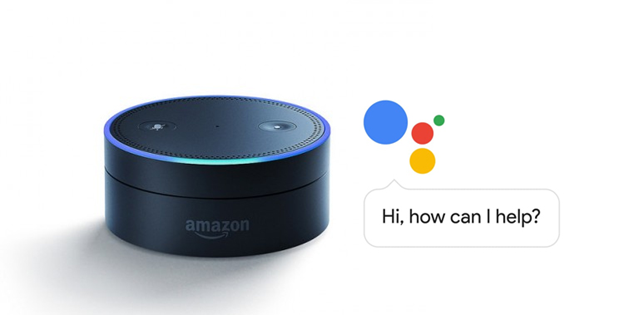
Automation speeds up processes like responding to inquiries, processing orders, and sending personalized messages. AI-driven workflows can trigger abandoned cart emails, recommend products, or provide proactive support. This reduces operational costs while allowing human agents to focus on complex customer needs.
Predictive Analytics for Customer Insights
Instead of reacting to customer actions, predictive analytics helps you anticipate their needs. AI models analyze past behavior to forecast trends, allowing you to offer relevant content and personalized deals at the right time. Retailers use this for product recommendations, while airlines adjust pricing based on demand predictions.
Privacy-First Marketing Strategies
As customers become more aware of data privacy, you must prioritize transparency. Relying on zero-party data (information customers willingly share, like preferences and feedback) instead of third-party tracking builds trust. Following privacy laws and clearly communicating how you use data can help maintain strong customer relationships.
Examples Of Customer Experience Marketing
Delivering an exceptional customer experience (CX) is about creating meaningful interactions that keep customers engaged. Leading brands invest in personalized experiences, seamless service, and emotional connections to build loyalty. Here are some standout examples of CX marketing done right.
Airbnb
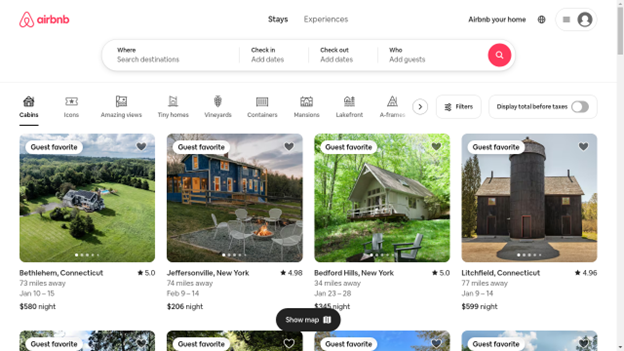
Airbnb provides a tailored booking experience for both hosts and guests. The platform uses a guest’s past bookings, search history, and preferences to offer personalized accommodation recommendations. If someone frequently books urban apartments, Airbnb prioritizes showing similar listings.
To help undecided travelers, Airbnb redesigned its homepage to highlight available stays in various destinations, making the search process easier. The platform also prioritizes trust and transparency with a two-way review system. Both hosts and guests can rate and review each other, ensuring accountability and improving service quality.
Netflix
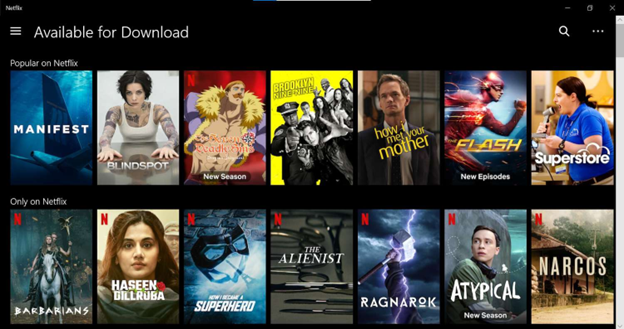
Netflix has built its success on deep personalization. The platform curates content recommendations based on user behavior, ensuring every customer sees movies and shows that align with their preferences. Features like percentage match ratings, ‘Skip Intro’, and auto-play for the next episode make the viewing experience seamless.
Netflix also addresses common customer pain points. Offline viewing allows users to download content and watch without an internet connection, making the platform more convenient. Additionally, multi-device support ensures users can switch between smartphones, tablets, laptops, and TVs without disruption.
Duolingo
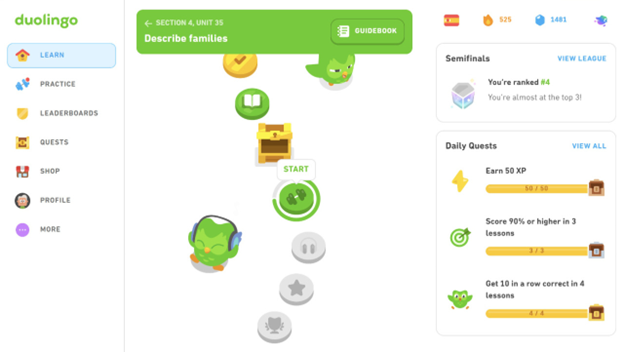
Duolingo has mastered customer engagement through gamification. Instead of traditional language lessons, the platform uses points, levels, and badges to make learning more interactive. Users earn XP for completing lessons and can compete on leaderboards, turning language learning into a social experience.
Personalization plays a key role in Duolingo’s CX marketing. The app adapts lessons based on user progress, suggesting new topics or revisiting old ones when needed. Push notifications remind users to continue their learning streaks, encouraging consistency and retention.
Coca-Cola

Coca-Cola’s Share a Coke campaign is a prime example of personalized marketing that resonates emotionally. By replacing its logo with popular names and slang, Coca-Cola made its product feel unique to each consumer.
The campaign also leveraged user-generated content (UGC) by encouraging people to share photos with their customized bottles using #ShareACoke. This strategy sparked a viral trend, turning customers into brand advocates.
Wrapping up
Customer experience marketing ensures that every touchpoint—before, during, and after a sale—enhances brand perception. By focusing on proactive communication, omnichannel support, and real-time engagement, businesses can drive higher customer retention and lifetime value.
With Ozonetel’s AI-engineered oneCXi platform, you can automate and optimize customer interactions across voice, chat, email, and social channels. Our AI-powered chatbots, skill-based call routing, and real-time performance insights enable businesses to offer faster resolutions and highly personalized experiences.
Deliver exceptional customer experiences at every touchpoint. Start your 7-day free trial today!
Conclusion: How Ozonetel Can Help
Building a customer-first culture requires the right tools to support seamless communication, real-time insights, and personalized interactions. Ozonetel’s cloud communication solutions help businesses streamline customer interactions, improve response times, and enhance overall customer satisfaction.
With features like:
- Omnichannel communication to connect with customers across voice, chat, email, and social platforms.
- AI-driven analytics to track customer sentiment and improve service quality.
- Intelligent call routing to reduce wait times and connect customers with the right agents faster.
- Automated follow-ups and self-service options to ensure customer concerns are addressed promptly.
Enhance Your CX Marketing Strategy
Frequently Asked Questions
The 5 C’s of customer experience are:
- Consistency: Customers expect the same level of service and experience across all touchpoints.
- Convenience: A smooth, hassle-free interaction keeps customers engaged.
- Communication: Clear, timely, and personalized communication builds trust.
- Customization: Tailoring products, services, and interactions to individual preferences improves satisfaction.
- Community: Creating a sense of belonging encourages loyalty and brand advocacy.
Customer experience (CX) focuses on how customers perceive and interact with your brand at every stage of their journey. A strong CX strategy helps you:
- Build customer loyalty and retention
- Increase customer satisfaction and engagement
- Differentiate from competitors by offering better experiences
- Drive revenue through repeat business and referrals
A great customer experience marketing example is Spotify’s Wrapped campaign. Every year, Spotify analyzes user listening habits and creates a personalized summary with insights, top songs, and playlists. This campaign boosts engagement by making customers feel valued and understood. It also encourages social sharing, turning users into brand advocates.



